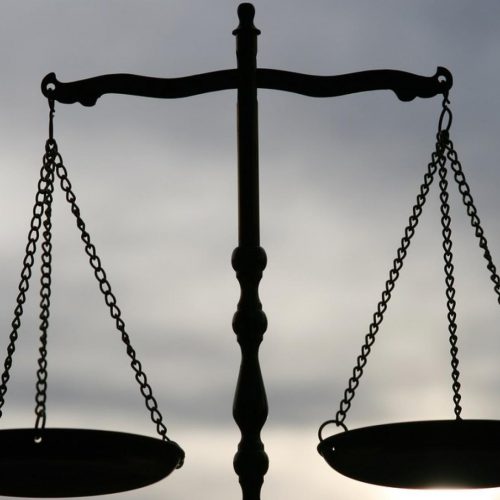Part 2 – Nathan’s Top 5 Balance Sheet Ratios

What’s the temperature of Your Business?
Nathan’s Top 5 Balance Sheet Ratios
Part 2 of 3

To best understand the Balance Sheet you should compare yourself over time and compare yourself to others in your industry. Two companies have been fabricated to outline potential issues. Both Company A & Company B are not real companies. Both are designed to illustrate potential strengths and weaknesses in their Balance Sheets. Utilizing ratios can help you understand what the numbers really mean. Here are my top 5 Ratios:
1. Working Capital or Current Ratio = Current Assets / Current Liabilities
Company A = $600,000/$190,000 Company B: $240,000/$345,00
Company A: 3.16 Company B: 0.70
- This ratio indicates whether a company has enough short term assets to cover its short term debt. Basically it measures your ability to pay your bills and keep current
- This ratio gives investors or future buyers of your company an idea of the company’s underlying operational efficiency
- A number below 1.0 indicates negative working capital
- A company may run into trouble paying back creditors in the short term. A worst case scenario is bankruptcy. As working capital decreases over a period of time, one should be doing a further analysis to determine the slide
- Anything between 1.2 and 2.5 is good – healthy balance of utilizing the current assets
- Anything over 2.5 – increases the flexibility to expand operations
- However, Sitting on excess inventory is not always good
There are also problems with this ratio, as it can be misleading. If a company’s current assets are high due to inventories not being converted or account receivables that are aged or “old” due to poor collections, it will give you a false sense of security. You may still be running out of cash.
2. Debt to Equity = Total Liabilities/Total Net Worth (Equity)
Company A = $800,000/$500,000 Company B: $865,000/$225,000
Company A: 1.60 Company B: 3.84
- This ratio is important for bankers as they want to ensure that you leave enough money in the business. If you pull cash out, and yet have high liabilities, your creditors will feel threatened and put more pressure on your business
- A high debt/equity ratio generally means that a company has been aggressive in financing its growth with debt and not by using accumulating profit
- This ratio also depends on the industry in which the company operates.
- The goal is to be less than 1.0
- Extremely efficient and growth conscious companies can be in the range of 0.2 – 1.0
3. Debt to Asset ratio = Total liabilities / Total Assets
Company A = $800,00/$1,300,000 Company B: $865,000/1,090,000
Company A: 0.62 Company B: 0.79
- This ratio shows the percentage of a company’s assets financed by creditors, an indicator of financial leverage
- It tells you the percentage of total assets that are financed by creditors.
- A high ratio indicates a high dependency on debt, meaning more financial risk
- Both companies may experience difficulty if a recession hit and times got tough, they have no “wiggle room” with their debt covenant
- The goal is to be below 0.30
4. Return on Assets (ROA) = Net profit/Total Assets
Company A = $150,000/$1,300,000 Company B: $25,000/$1,090,000
Company A: 11.5% Company B: 2.3%
- This ratio is very important for Landscape/Construction companies, as it measures how effective your company is in utilizing your total invested capital (equipment)
- Many contractors believe in purchasing and owning all of their equipment, my question would be “how effective are you in converting those depreciating assets into net income?”
- Many contractors love “Iron” and have a hard time selling equipment, or think that because the equipment is paid off, it’s not costing them anything.
- Use this calculation to determine whether purchasing/leasing/renting equipment or selling low use equipment are the right method for you.
- The more risky the business, a higher return should be expected
- Landscape Construction would be considered more risky than Maintenance companies and should therefore have a higher ROA
- For Design Build/Construction Only: +30%
- For Maintenance & Snow Only: +20%
- For Landscape Design/Build & Management (incl. Snow): +25%
5. Return on Equity (ROE) = Net Profit/Total Net Worth (Equity)
Company A = $150,000/$500,000 Company B: $25,000/$225,000
Company A: 30.0% Company B: 11.1%
- This ratio measures the return earned on the money you (and/or other investors) have put into the business, basically how profitable is the company by comparing its net income to its owners equity
- It’s a very important number that investors use before deciding to purchase a company
- Owners/CEO’s or angel investors will keep an eye on this ratio
- It should be noted that there are variations between types of businesses.
- For the Landscape/Construction Industry, a good return on equity ratio is +25%

Ideally you should be reviewing your ratios and balance sheet on a monthly basis to watch for changing trends in your company. If you are unsure how to start, ask for help! Have your accountant or hire a landscape consultant to help you.
If you would like assistance in reviewing your ratios and balance sheet, contact Southbrook Accounting.
